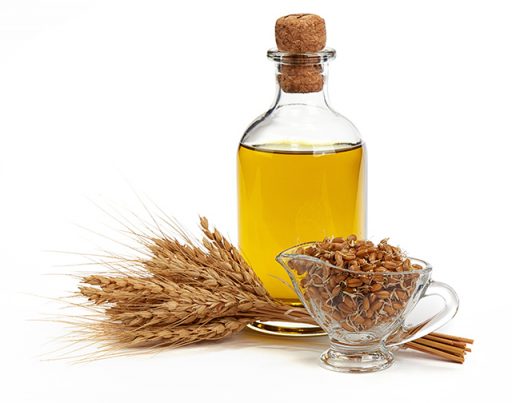
Wheat Germ Oil – sources, health benefits, nutrients, uses and constituents at NaturalPedia.com
Saturday, July 08, 2017 by Frances Bloomfield
http://www.naturalnewsherbs.com/2017-07-08-wheat-germ-sources-health-benefits-nutrients-uses-and-constituents-at-naturalpedia-com.html

Wheat germ oil is a product derived from wheat berry germ, which is the embryo of the wheat. The wheat germ is responsible for feeding the wheat plant as it grows; it is a no-brainer that for the germ oil to be able to do so, it must be composed largely of chemicals and compounds. Approximately 8 to 14 percent of the wheat germ contains oil, and to extract this oil requires processes like pressing and the use of solvent extraction. Though wheat germ oil has culinary uses, it is mostly utilized in medicinal and therapeutic applications due to its abundance of beneficial nutrients and antioxidants.
List of known nutrients
Wheat germ oil contains:
- Magnesium
- Omega-3 fatty acids
- Omega-6 fatty acids, including linoleic acid
- Vitamin A
- Vitamin B
- Vitamin D
- Vitamin E
This vegetable oil is most notable for being one of the best sources of vitamin E, a fat-soluble antioxidant that neutralizes free radicals. Besides its antioxidant effects, vitamin E aids the body by facilitating metabolic functions, thickening hair to prevent hair loss, and nourishing the skin.
The second-most noteworthy nutrient in wheat germ oil is magnesium, a mineral essential to blood sugar regulation and monitoring. Because of this, however, wheat germ oil is not advisable for individuals on medication for hypoglycemia, as wheat germ oil consumption leads to a dangerous dip in blood sugar levels.
Medicinal uses for wheat germ oil
Consuming and topically applying wheat germ oil can alleviate the symptoms of:
- Acne
- Alzheimer’s disease
- Diabetes
- Eczema
- Heart attack
- Immune system deficiency
- Neurodegenerative diseases
- Psoriasis
- Stroke
Wheat germ oil is packed with vitamin E, antioxidants, linoleic acid, and many other nutrients and compounds that make it highly effective in treating a variety of common skin ailments ranging from eczema to psoriasis. Applying wheat germ oil to the skin has the added effect of increasing collagen formation and reducing oxidative stress, which in turn encourages quicker wound healing.
Body systems supported by wheat germ oil
- Brain
- Heart
- Immune system
- Nervous system
- Skin
With its content of omega-3 fatty acids and vitamin B, wheat germ oil contributes to the maintenance of a healthy heart. While vitamin B normalizes blood flow, the omega-3 fatty acids normalize blood pressure, lower cholesterol, and reduce plaque buildup in the arteries.
Wheat germ oil has multiple brain-boosting antioxidants like vitamins E and A. Together, all these antioxidants combat the effects of free radicals on neural pathways, thereby lowering the risk of any issues with memory and attention.
Ways to use wheat germ oil
The most common culinary use for wheat germ oil is in flavoring or finishing, such as drizzling it over salads, cereals, and smoothies. Unlike other vegetable oils, wheat germ oil is fragile and unable to handle exposure to high heat. As such, wheat germ oil should not be used in baking, roasting, and sautéing.
Where to learn more
- How to Lose Face Fat with Home Remedies
- Superfood Profile: Find the Health Benefits of Wheat Germ Oil
- Top 10 Natural Home Remedies for Mastitis
- Top Foods for Fertility
- UV Natural Protection: 5 Non-Toxic Natural oils That Act As A Sunscreen Layer
Summary
Wheat germ oil is an excellent source of vitamin E and magnesium. Since it’s loaded with vitamin E, wheat germ oil nourishes the skin and hair, keeping both healthy and strong. The magnesium in wheat germ oil is good for diabetics, who need to keep an eye on their blood sugar levels.
The best ways to use wheat germ oil is to combine it with foods that have already been cooked or don’t require cooking, or to use it as a topical application like body moisturizer.
Despite being highly beneficial, certain individuals should avoid wheat germ oil if they are taking high blood sugar medication, blood pressure-lowering medication, or have high cholesterol.
Sources include:
Food.NDTV.com
OrganicFacts.net
StyleCraze.com
FindHomeRemedy.com
Prevention.com
Tagged Under: Tags: Wheat germ oil






